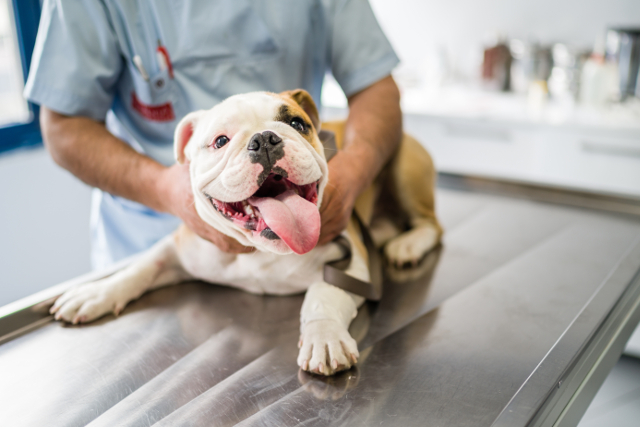As a pet owner, it’s crucial to be aware of common health issues that can affect your furry, feathered, or scaly companions. Recognizing the signs early and taking appropriate action can significantly impact your pet’s well-being and longevity. This guide covers some of the most common pet health issues, their symptoms, and how to address them.
1. Obesity
Overview: Obesity is a prevalent issue in pets, particularly in dogs and cats. It can lead to a range of health problems, including diabetes, heart disease, and joint issues.
Symptoms: Excessive weight gain, difficulty moving, shortness of breath, and decreased activity levels are common signs of obesity.
Prevention and Management:
- Diet: Provide a balanced, portion-controlled diet appropriate for your pet’s age, breed, and activity level. Avoid giving too many treats and table scraps.
- Exercise: Ensure your pet gets regular physical activity. This could include walks, playtime, or structured exercise routines.
- Veterinary Guidance: Consult your veterinarian for a tailored weight management plan, which may include dietary changes and monitoring.
2. Dental Disease
Overview: Dental disease, including gingivitis and periodontal disease, is common in pets. Poor dental hygiene can lead to tooth loss, pain, and systemic infections.
Symptoms: Bad breath, difficulty eating, drooling, swollen or bleeding gums, and loose teeth are signs of dental issues.
Prevention and Management:
- Regular Brushing: Brush your pet’s teeth regularly using pet-specific toothpaste and toothbrushes.
- Dental Chews and Toys: These can help reduce plaque and tartar buildup.
- Professional Cleanings: Schedule regular dental check-ups and cleanings with your veterinarian.
3. Parasites
Overview: Parasites such as fleas, ticks, and worms are common in pets. They can cause discomfort and serious health issues if left untreated.
Symptoms: Itching, scratching, visible parasites, hair loss, and changes in stool are signs of a parasitic infection.
Prevention and Management:
- Regular Check-ups: Regularly inspect your pet for signs of parasites, especially after spending time outdoors.
- Preventative Treatments: Use veterinarian-recommended flea, tick, and worm preventatives.
- Clean Environment: Keep your home and pet’s living areas clean to reduce the risk of infestations.
4. Allergies
Overview: Pets can suffer from allergies to food, environmental factors, or substances like pollen and dust.
Symptoms: Itchy skin, ear infections, sneezing, coughing, and gastrointestinal issues can indicate allergies.
Prevention and Management:
- Veterinary Diagnosis: Consult your veterinarian for a proper diagnosis, which may involve allergy testing.
- Dietary Management: If food allergies are suspected, an elimination diet may help identify the culprit.
- Medication and Supplements: Antihistamines, corticosteroids, or other medications may be prescribed to manage symptoms.
5. Arthritis
Overview: Arthritis is a common condition in older pets, particularly dogs. It involves inflammation of the joints, leading to pain and stiffness.
Symptoms: Limping, difficulty standing or climbing stairs, decreased activity, and reluctance to move are signs of arthritis.
Prevention and Management:
- Weight Management: Keeping your pet at a healthy weight reduces strain on their joints.
- Exercise: Gentle, regular exercise helps maintain joint mobility.
- Veterinary Care: Pain management, supplements like glucosamine and chondroitin, and possibly prescription medications can help alleviate symptoms.
6. Ear Infections
Overview: Ear infections are common in pets, particularly in dogs with floppy ears. They can be caused by bacteria, yeast, or allergies.
Symptoms: Head shaking, scratching at the ears, discharge, and a foul odor are common signs of an ear infection.
Prevention and Management:
- Regular Cleaning: Clean your pet’s ears regularly with a veterinarian-recommended solution.
- Keep Ears Dry: After baths or swimming, dry your pet’s ears to prevent moisture buildup.
- Veterinary Treatment: If an infection occurs, consult your veterinarian for appropriate treatment, which may include antibiotics or antifungal medications.
7. Respiratory Issues
Overview: Respiratory issues can affect pets, especially those with flat faces (brachycephalic breeds) like Bulldogs and Pugs. These problems can range from mild to severe.
Symptoms: Coughing, wheezing, difficulty breathing, nasal discharge, and fatigue are signs of respiratory issues.
Prevention and Management:
- Avoid Overexertion: Be cautious with exercise, especially in hot weather, to prevent respiratory distress.
- Environment Control: Keep your pet away from allergens and irritants like smoke or strong perfumes.
- Veterinary Care: Seek veterinary attention for diagnosis and treatment, which may include medications or surgery in severe cases.
8. Urinary Tract Issues
Overview: Urinary tract infections (UTIs) and bladder stones are common in pets, especially cats.
Symptoms: Frequent urination, straining to urinate, blood in urine, and accidents outside the litter box are signs of urinary issues.
Prevention and Management:
- Hydration: Ensure your pet has access to plenty of fresh water.
- Diet: Feed a balanced diet appropriate for your pet’s needs, and consult your veterinarian if urinary issues are a concern.
- Veterinary Care: UTIs and bladder stones require prompt veterinary treatment, which may include antibiotics, dietary changes, or surgery.
9. Skin Conditions
Overview: Skin conditions can result from allergies, parasites, infections, or underlying health issues.
Symptoms: Itching, redness, bumps, sores, hair loss, and flaky skin are common signs of skin problems.
Prevention and Management:
- Regular Grooming: Regular grooming helps identify and address skin issues early.
- Proper Nutrition: A balanced diet supports healthy skin and coat.
- Veterinary Diagnosis: Consult your veterinarian to determine the cause and appropriate treatment, which may include topical treatments, medications, or dietary changes.
Recognizing and addressing common pet health issues is essential for ensuring your pet’s well-being. Regular veterinary check-ups, a balanced diet, and proper grooming are foundational aspects of preventive care. By staying vigilant and proactive, you can catch health problems early and provide your pet with the best care possible, ensuring a long and healthy life together.

